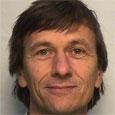SpinENGINE
Harnessing the Emergent Properties of Nanomagnet Ensembles for Massively Parallel Data Analysis
About the SpinENGINE project
The SpinENGINE project will lay the foundations for a new, massively parallel, platform based on emergent behaviour in nanomagnet ensembles. The project will an efficient, highly scalable, and easily reproducible platform meeting the data challenges in our increasingly data-rich society. We will build upon our recent discoveries and use complex, nonlinear, and highly tunable interactions in such ensembles to realize a hardware platform for “Reservoir Computing”, a biologically-inspired computational approach. Our critical hypothesis is that the synergies between the inherent properties of nanomagnet ensembles and those required for reservoir computing will enable the efficient creation of a highly adaptive computational platform for the analysis of complex, dynamic data sets. This has the potential to greatly outperform current approaches using conventional CMOS hardware.
SpinENGINE will bring together a multidisciplinary team of researchers with expertise in computer science, condensed matter physics, material science, computational modelling, and high-resolution microscopy. This will enable us to simultaneously explore the fundamental behaviours of nanomagnet ensembles and understand how these can be harnessed for useful computation. By the end of the project, we aim to fabricate a proof-of-concept device capable of solving pattern recognition and classification problems, and, in collaboration with our industrial partner, IBM, produce a roadmap to the further scaling and commercialization of our computational platform. Success in the SpinENGINE project will have vast implications for data analysis at all scales, ranging from low power computation in the simplest sensor node to accelerated data processing in the most complex supercomputer.
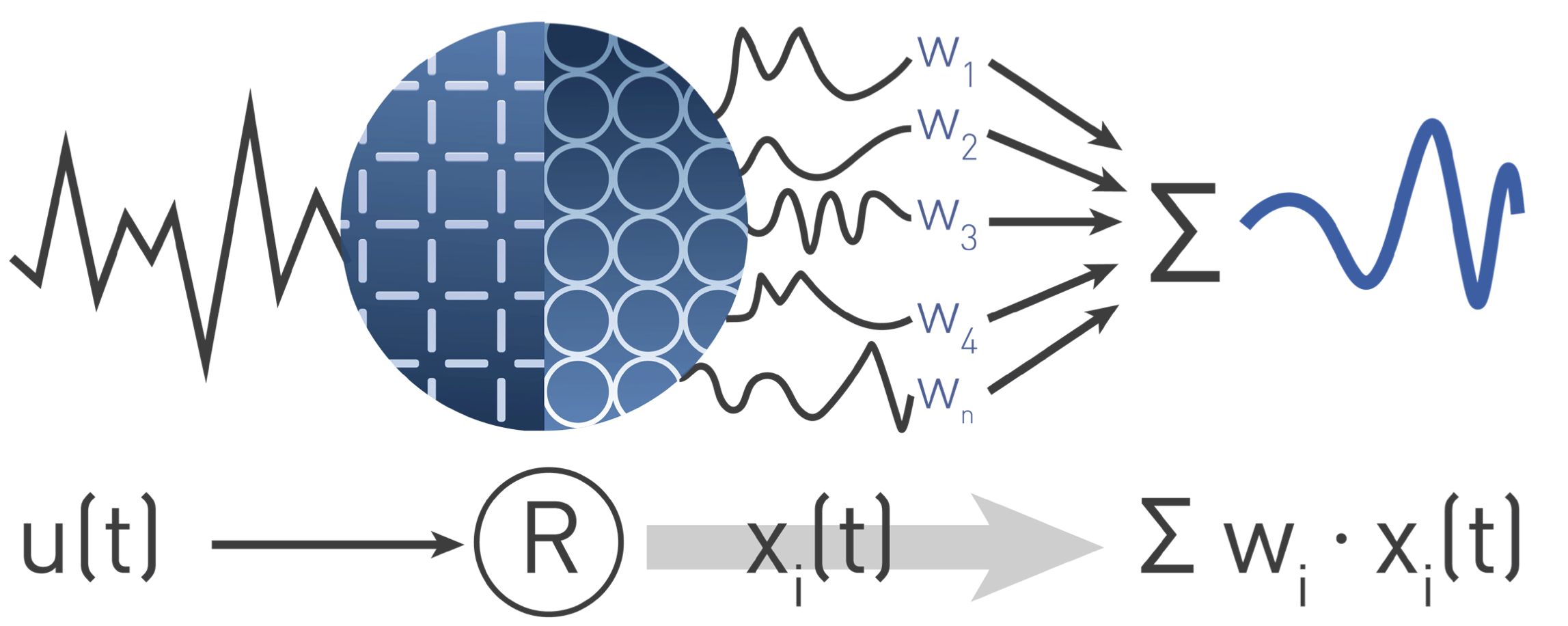
Publications
-
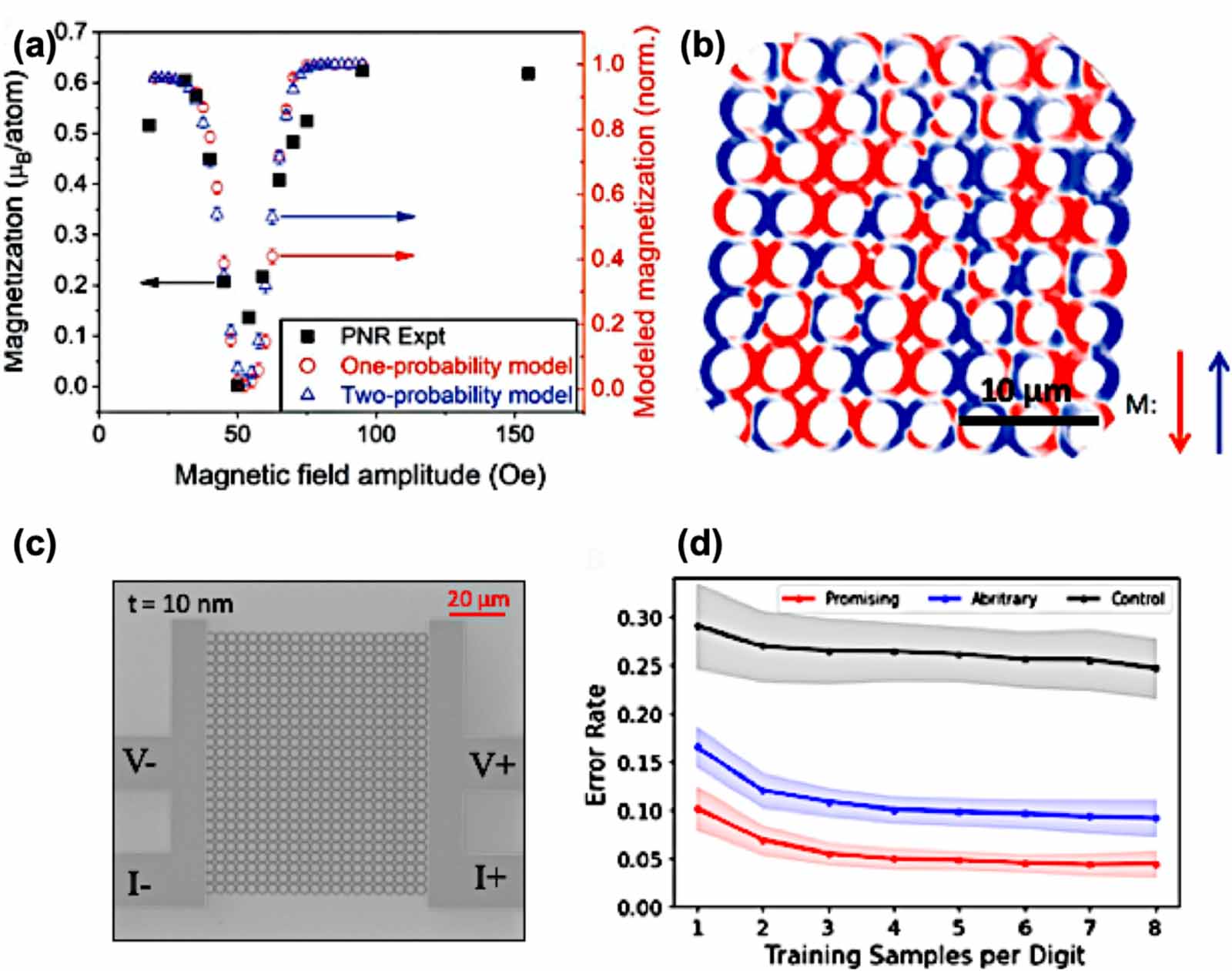 Electrically programmable magnetic coupling in an Ising network exploiting solid-state ionic gating
Electrically programmable magnetic coupling in an Ising network exploiting solid-state ionic gating
Guru Venkat, Dan A Allwood, and Thomas James Hayward
Journal of Physics D: Applied Physics, October 2023
Open Access: https://doi.org/10.1088/1361-6463/ad0568
Abstract: Domain walls (DWs) in magnetic nanowires are promising candidates for a variety of applications including Boolean/unconventional logic, memories, in-memory computing as well as magnetic sensors and biomagnetic implementations. They show rich physical behaviour and are controllable using a number of methods including magnetic fields, charge and spin currents and spin-orbit torques. In this review, we detail types of domain walls in ferromagnetic nanowires and describe processes of manipulating their state. We look at the state of the art of DW applications and give our take on the their current status, technological feasibility and challenges. -
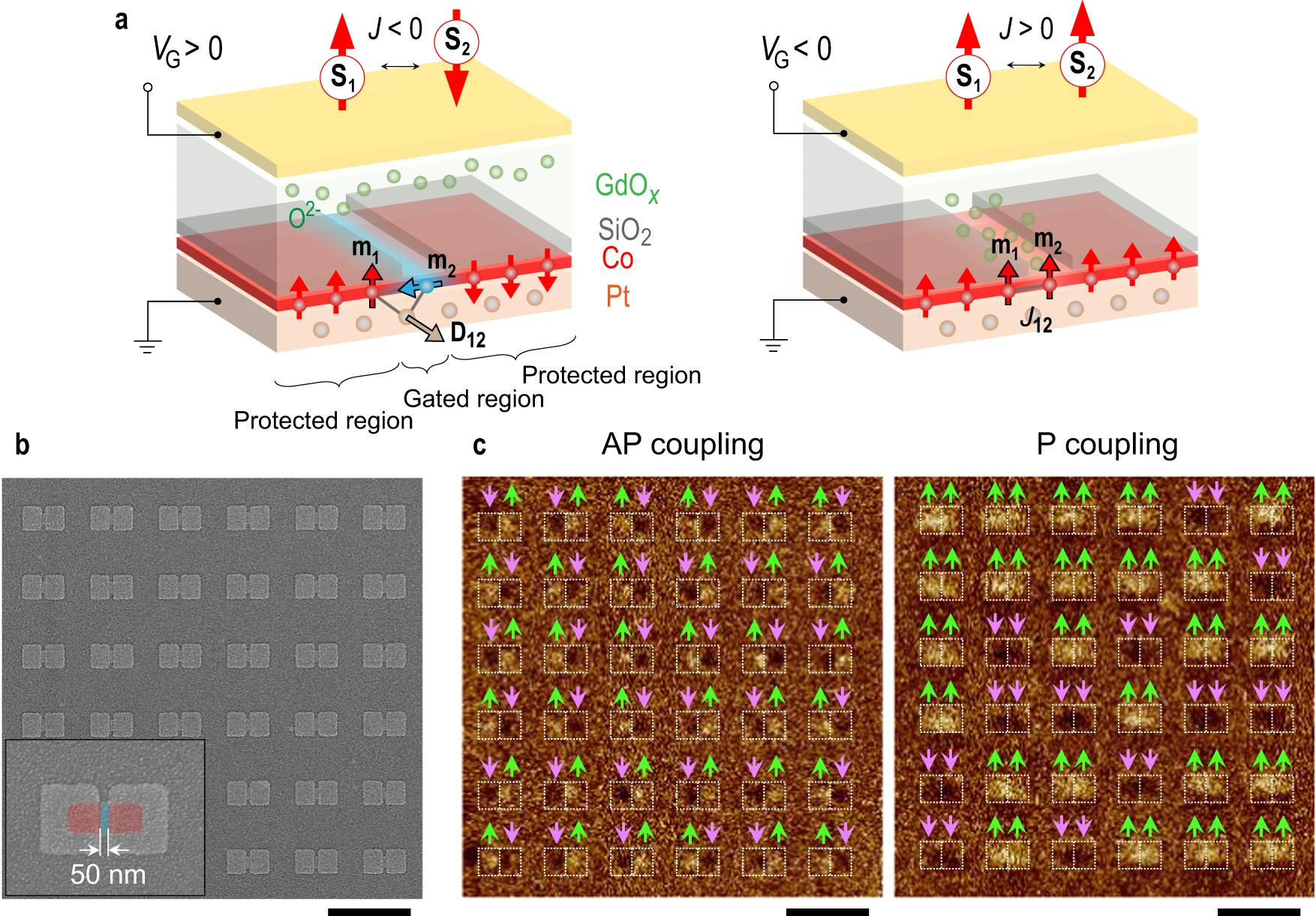 Electrically programmable magnetic coupling in an Ising network exploiting solid-state ionic gating
Electrically programmable magnetic coupling in an Ising network exploiting solid-state ionic gating
Chao Yun, Zhongyu Liang, Aleš Hrabec, Zhentao Liu, Mantao Huang, Leran Wang, Yifei Xiao, Yikun Fang, Wei Li, Wenyun Yang, Yanglong Hou, Jinbo Yang, Laura J. Heyderman, Pietro Gambardella, and Zhaochu Luo
Nature Communications, volume 14, Article number: 6367, October 2023
Open Access: https://doi.org/10.1038/s41467-023-41830-5
Abstract: Two-dimensional arrays of magnetically coupled nanomagnets provide a mesoscopic platform for exploring collective phenomena as well as realizing a broad range of spintronic devices. In particular, the magnetic coupling plays a critical role in determining the nature of the cooperative behavior and providing new functionalities in nanomagnet-based devices. Here, we create coupled Ising-like nanomagnets in which the coupling between adjacent nanomagnetic regions can be reversibly converted between parallel and antiparallel through solid-state ionic gating. This is achieved with the voltage-control of the magnetic anisotropy in a nanosized region where the symmetric exchange interaction favors parallel alignment and the antisymmetric exchange interaction, namely the Dzyaloshinskii-Moriya interaction, favors antiparallel alignment of the nanomagnet magnetizations. Applying this concept to a two-dimensional lattice, we demonstrate a voltage-controlled phase transition in artificial spin ices. Furthermore, we achieve an addressable control of the individual couplings and realize an electrically programmable Ising network, which opens up new avenues to design nanomagnet-based logic devices and neuromorphic computers. -
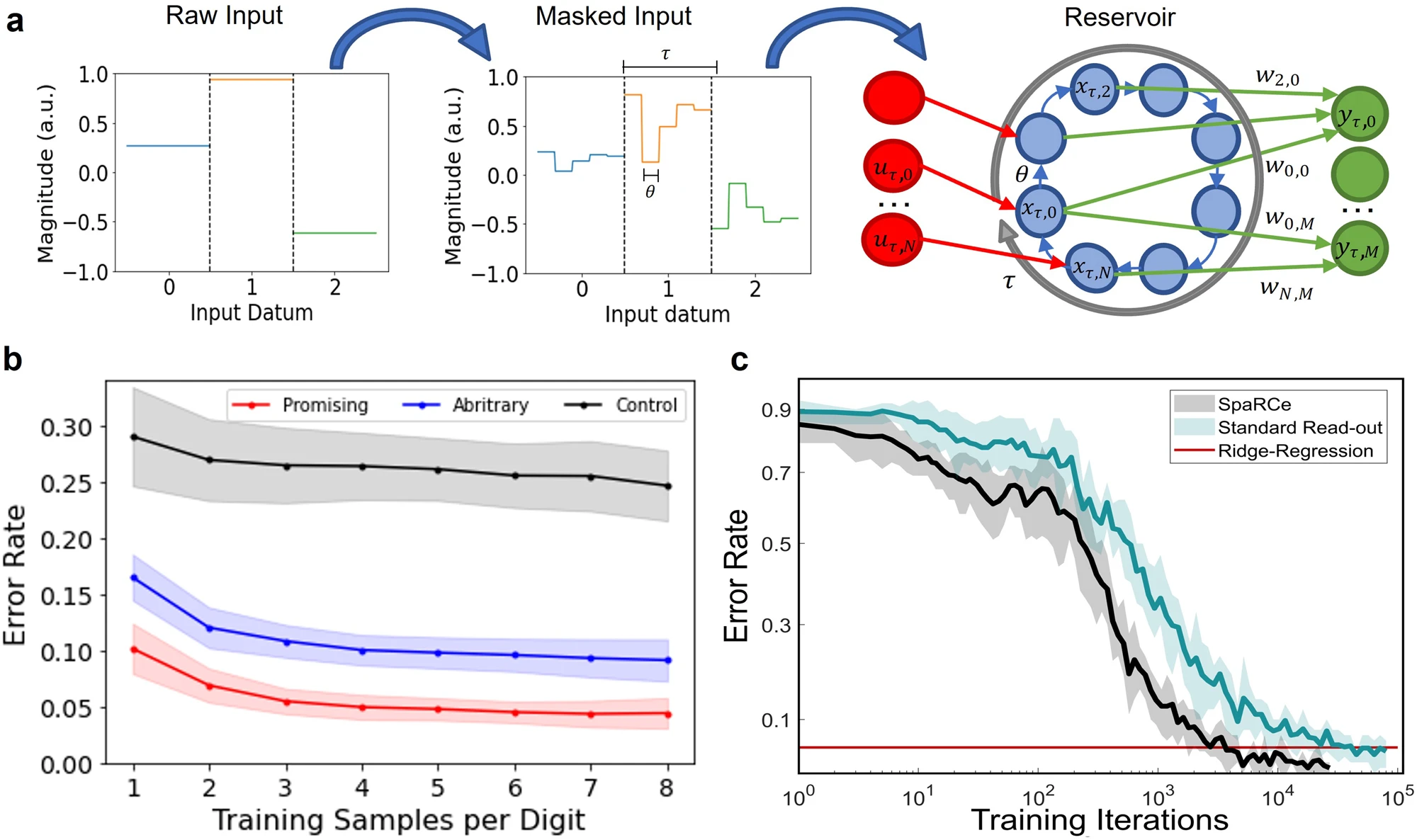 Reconfigurable reservoir computing in a magnetic metamaterial
Reconfigurable reservoir computing in a magnetic metamaterial
I.T. Vidamour, C. Swindells, G. Venkat, L. Manneschi, P. W. Fry, A. Welbourne, R. M. Rowan-Robinson, D. Backes, F. Maccherozzi, S. S. Dhesi, E. Vasilaki, D. A. Allwood, and T. J. Hayward
Communications Physics, volume 6, Article number: 230, August 2023
Open Access: https://doi.org/10.1038/s42005-023-01352-4
Abstract: In-materia reservoir computing (RC) leverages the intrinsic physical responses of functional materials to perform complex computational tasks. Magnetic metamaterials are exciting candidates for RC due to their huge state space, nonlinear emergent dynamics, and non-volatile memory. However, to be suitable for a broad range of tasks, the material system is required to exhibit a broad range of properties, and isolating these behaviours experimentally can often prove difficult. By using an electrically accessible device consisting of an array of interconnected magnetic nanorings- a system shown to exhibit complex emergent dynamics- here we show how reconfiguring the reservoir architecture allows exploitation of different aspects the system’s dynamical behaviours. This is evidenced through state-of-the-art performance in diverse benchmark tasks with very different computational requirements, highlighting the additional computational configurability that can be obtained by altering the input/output architecture around the material system. -
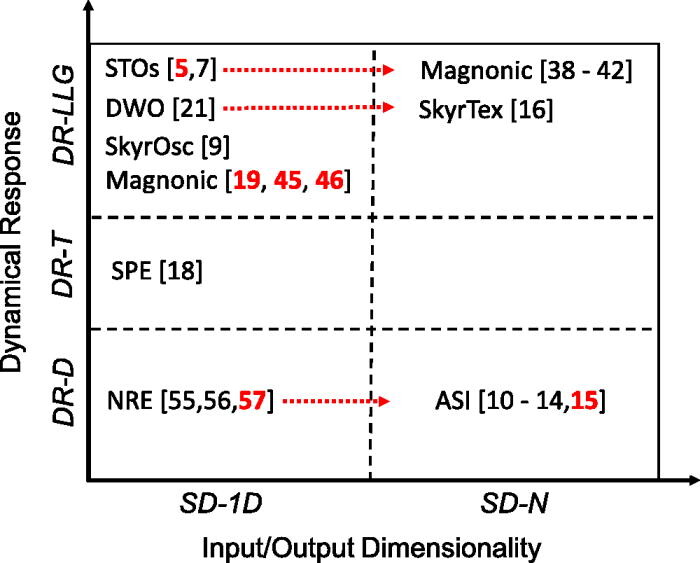 A perspective on physical reservoir computing with nanomagnetic devices
A perspective on physical reservoir computing with nanomagnetic devices
Dan A. Allwood, Matthew O. A. Ellis, David Griffin, Thomas J. Hayward, Luca Manneschi, Mohammad F. KH. Musameh, Simon O'Keefe, Susan Stepney, Charles Swindells, Martin A. Trefzer, Eleni Vasilaki, Guru Venkat, Ian Vidamour, and Chester Wringe
Appl. Phys. Lett. 122, 040501, January 2023
Open Access: https://journals.aps.org/prb/abstract/10.1103/PhysRevB.106.064408
Abstract: Neural networks have revolutionized the area of artificial intelligence and introduced transformative applications to almost every scientific field and industry. However, this success comes at a great price; the energy requirements for training advanced models are unsustainable. One promising way to address this pressing issue is by developing low-energy neuromorphic hardware that directly supports the algorithm's requirements. The intrinsic non-volatility, non-linearity, and memory of spintronic devices make them appealing candidates for neuromorphic devices. Here, we focus on the reservoir computing paradigm, a recurrent network with a simple training algorithm suitable for computation with spintronic devices since they can provide the properties of non-linearity and memory. We review technologies and methods for developing neuromorphic spintronic devices and conclude with critical open issues to address before such devices become widely used. -
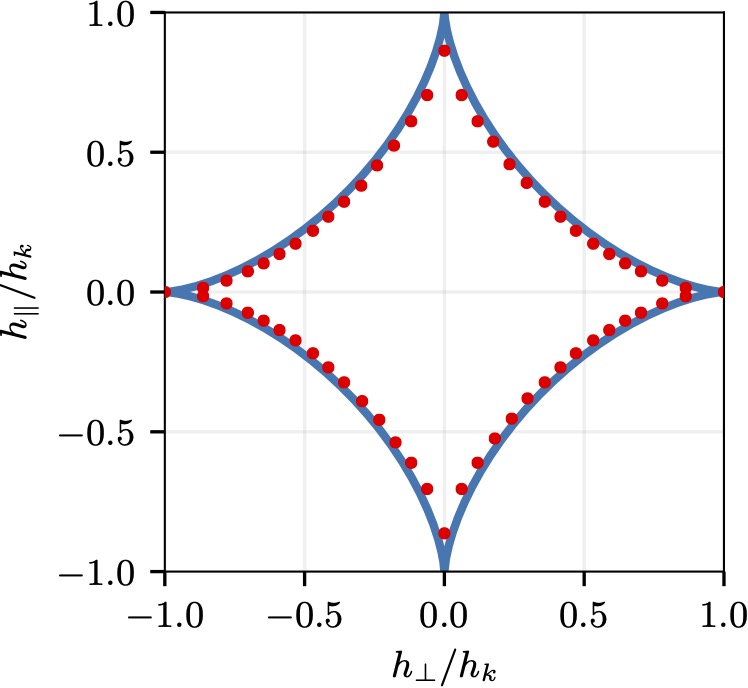 flatspin: A Large-Scale Artificial Spin Ice Simulator
flatspin: A Large-Scale Artificial Spin Ice Simulator
Johannes H. Jensen, Anders Strømberg, Odd Rune Lykkebø, Arthur Penty, Jonathan Leliaert, Magnus Själander, Erik Folven, and Gunnar Tufte
Phys. Rev. B 106, 064408, August 2022
Open Access: https://journals.aps.org/prb/abstract/10.1103/PhysRevB.106.064408
Abstract: We present flatspin, a novel simulator for systems of interacting mesoscopic spins on a lattice, also known as artificial spin ice (ASI). A generalization of the Stoner-Wohlfarth model is introduced, and combined with a well-defined switching protocol to capture realistic ASI dynamics using a point-dipole approximation. Temperature is modelled as an effective thermal field, based on the Arrhenius-Néel equation. Through GPU acceleration, flatspin can simulate the dynamics of millions of magnets within practical time frames, enabling exploration of large-scale emergent phenomena at unprecedented speeds. We demonstrate flatspin's versatility through the reproduction of a diverse set of established experimental results from literature. In particular, the field-driven magnetization reversal of “pinwheel” ASI is reproduced, for the first time, in a dipole model. Finally, we use flatspin to explore aspects of “square” ASI by introducing dilution defects and measuring the effect on the vertex population. -
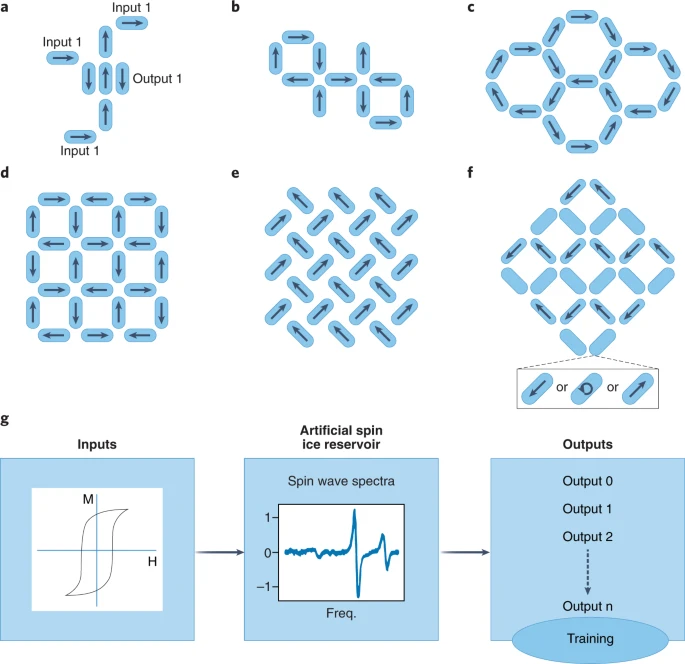 Spin ice devices from nanomagnets
Spin ice devices from nanomagnets
Laura J. Heyderman
Nat. Nanotechnol. 17, 435–436, May 2022
DOI: https://doi.org/10.1038/s41565-022-01088-2
Open Access: https://www.dora.lib4ri.ch/psi/islandora/object/psi%3A42800
Abstract: An artificial spin ice, containing two types of nanomagnets, can perform reservoir computing with minor magnetic field loops and spin wave spectra acting as inputs and outputs, respectively. In 2006, the term ‘artificial spin ice’ was coined to describe an array of magnetically coupled single-domain nanomagnets arranged on a square lattice. The array mimicked the behaviour of frustrated spins in the rare-earth titanate pyrochlores1. In the same year a well-designed arrangement of coupled nanoscale magnets performed logic operations for Boolean computation. This nanomagnetic logic, based on the minimisation of the stray field energy, caught the interest of researchers because of the promise of low power, high speed computing with non-volatile nanomagnets that could be downscaled. Subsequent work focused on the optimisation of nanomagnetic logic for the implementation in devices. In the field of artificial spin ice, scientists predominantly explored the fascinating physics that result from various geometries including emergent magnetic monopoles, phase transitions and magnetization dynamics. -
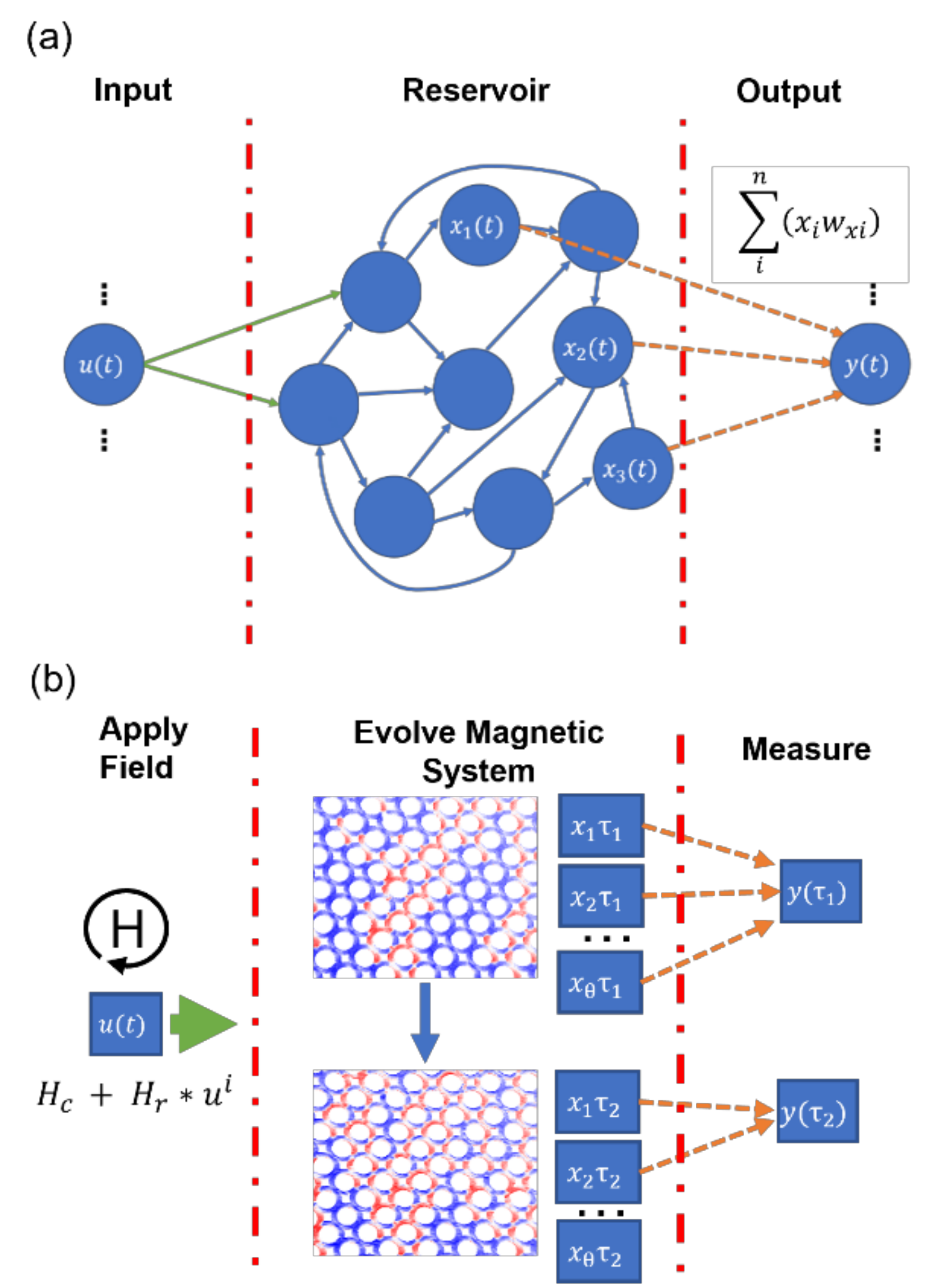 Quantifying the Computational Capability of a
Nanomagnetic Reservoir Computing Platform with
Emergent Magnetisation Dynamics
Quantifying the Computational Capability of a
Nanomagnetic Reservoir Computing Platform with
Emergent Magnetisation Dynamics
Ian Vidamour, Matthew O.A. Ellis, David Griffin, Guru Venkat, Charles Swindells, Richard W. S. Dawidek, Thomas J Broomhall, Nina-Juliane Steinke, Joshaniel Cooper, Francesco Maccherozzi, Sarnjeet Dhesi, Susan Stepney, Eleni Vasilaki, Dan A Allwood and Tom James Hayward
Nanotechnology, August 2022
Open Access: https://doi.org/10.1088/1361-6528/ac87b5
Abstract: Devices based on arrays of interconnected magnetic nano-rings with emergent magnetization dynamics have recently been proposed for use in reservoir computing applications, but for them to be computationally useful it must be possible to optimise their dynamical responses. Here, we use a phenomenological model to demonstrate that such reservoirs can be optimised for classification tasks by tuning hyperparameters that control the scaling and input-rate of data into the system using rotating magnetic fields. We use task-independent metrics to assess the rings' computational capabilities at each set of these hyperparameters and show how these metrics correlate directly to performance in spoken and written digit recognition tasks. We then show that these metrics, and performance in tasks, can be further improved by expanding the reservoir's output to include multiple, concurrent measures of the ring arrays' magnetic states. -
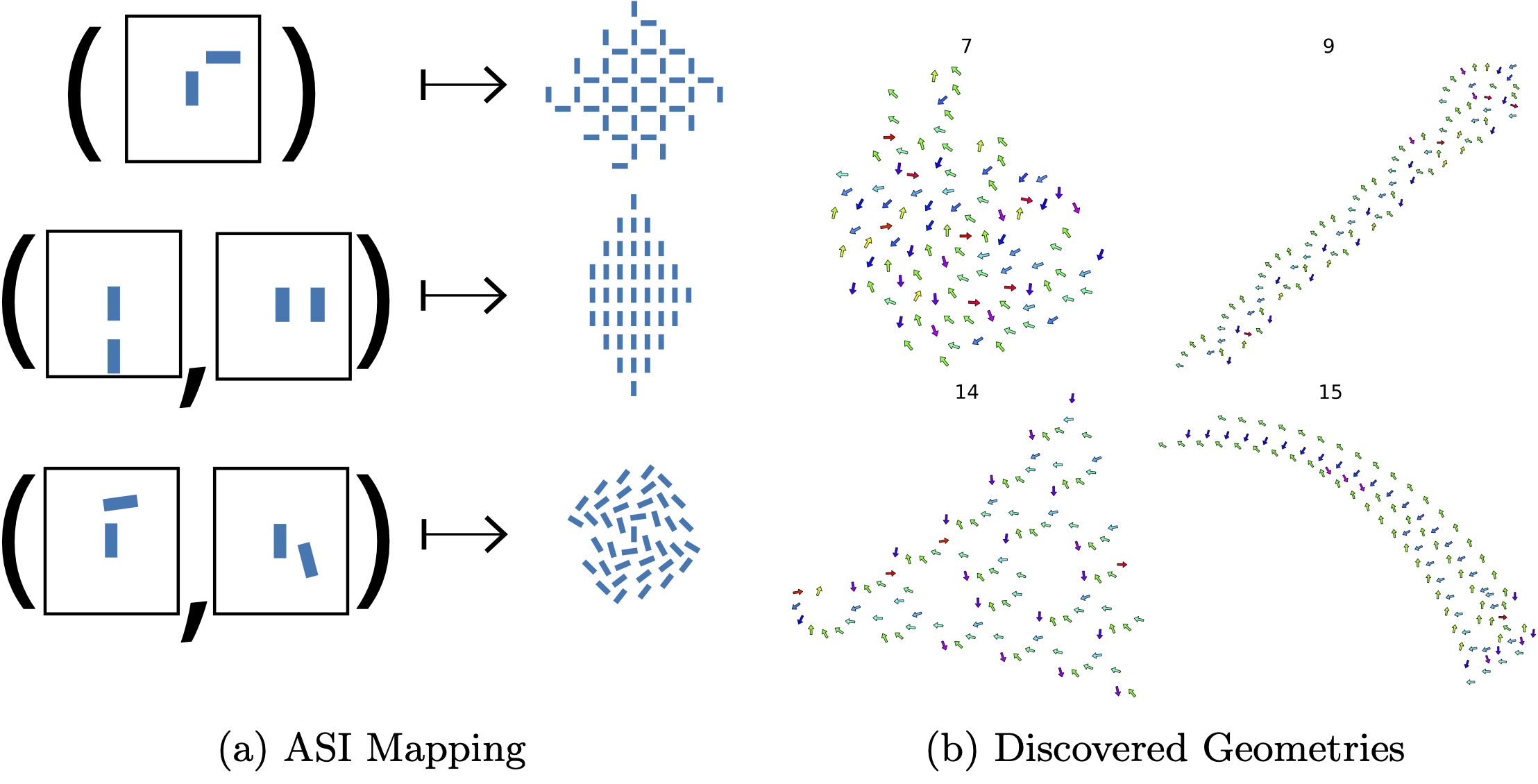 Sculpting the Spin Ice for Computation
Sculpting the Spin Ice for Computation
Arthur Penty and Gunnar Tufte
Proceedings of the International Conference on Unconventional Computation and Natural Computation, October 2021
Open Access: https://www.cs.york.ac.uk/nature/temc/TEMC2021-UCNC21/programme.pdf
Abstract: Ensembles of interacting nanomagnets known as Artificial Spin Ice (ASI) have become a promising new substrate for computation. Properties such as emergence and non-linear local interactions make it of particular interest for unconventional and material computation. Previously, we have proposed a method to represent and grow new ASI geometries, suited for use in an Evolutionary Algorithm (EA). Here we use our representation and evolution to further investigate towards computational properties including memory and classification. The richness of geometries found with sought computational properties indicates that ASI geometry is a fruitful tuning parameter for computational ASI systems. -
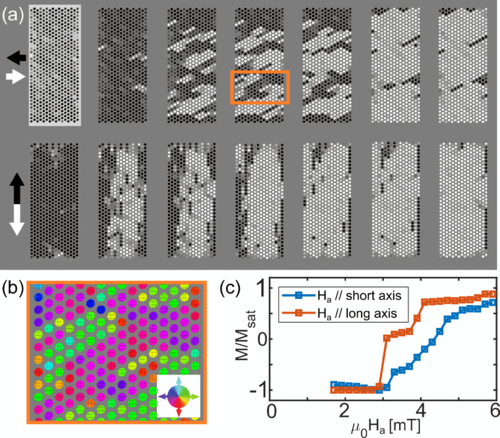 Effects of array shape and disk ellipticity in dipolar-coupled magnetic metamaterials
Effects of array shape and disk ellipticity in dipolar-coupled magnetic metamaterials
Sam D. Slöetjes, Einar S. Digernes, Anders Strømberg, Fredrik K. Olsen, Ambjørn D. Bang, Alpha T. N’Diaye, Rajesh V. Chopdekar, Erik Folven, and Jostein K. Grepstad
Physics Review B Vol.104, No. 134421, October 2021
Open Access: https://doi.org/10.1103/PhysRevB.104.134421
Abstract: Two-dimensional lattices of dipolar-coupled thin film ferromagnetic nanodisks give rise to emergent superferromagnetic (SFM) order when the spacing between dots becomes sufficiently small. In this paper, we define micron-sized arrays of permalloy nanodisks arranged on a hexagonal lattice. The arrays were shaped as hexagons, squares, and rectangles to investigate finite-size effects in the SFM domain structure for such arrays. The resulting domain patterns were examined using x-ray magnetic circular dichroism photoemission electron microscopy. At room temperature, we find these SFM metamaterials to be below their blocking temperature. Distinct differences were found in the magnetic switching characteristics of horizontally and vertically oriented rectangular arrays. The results are corroborated by micromagnetic simulations. -
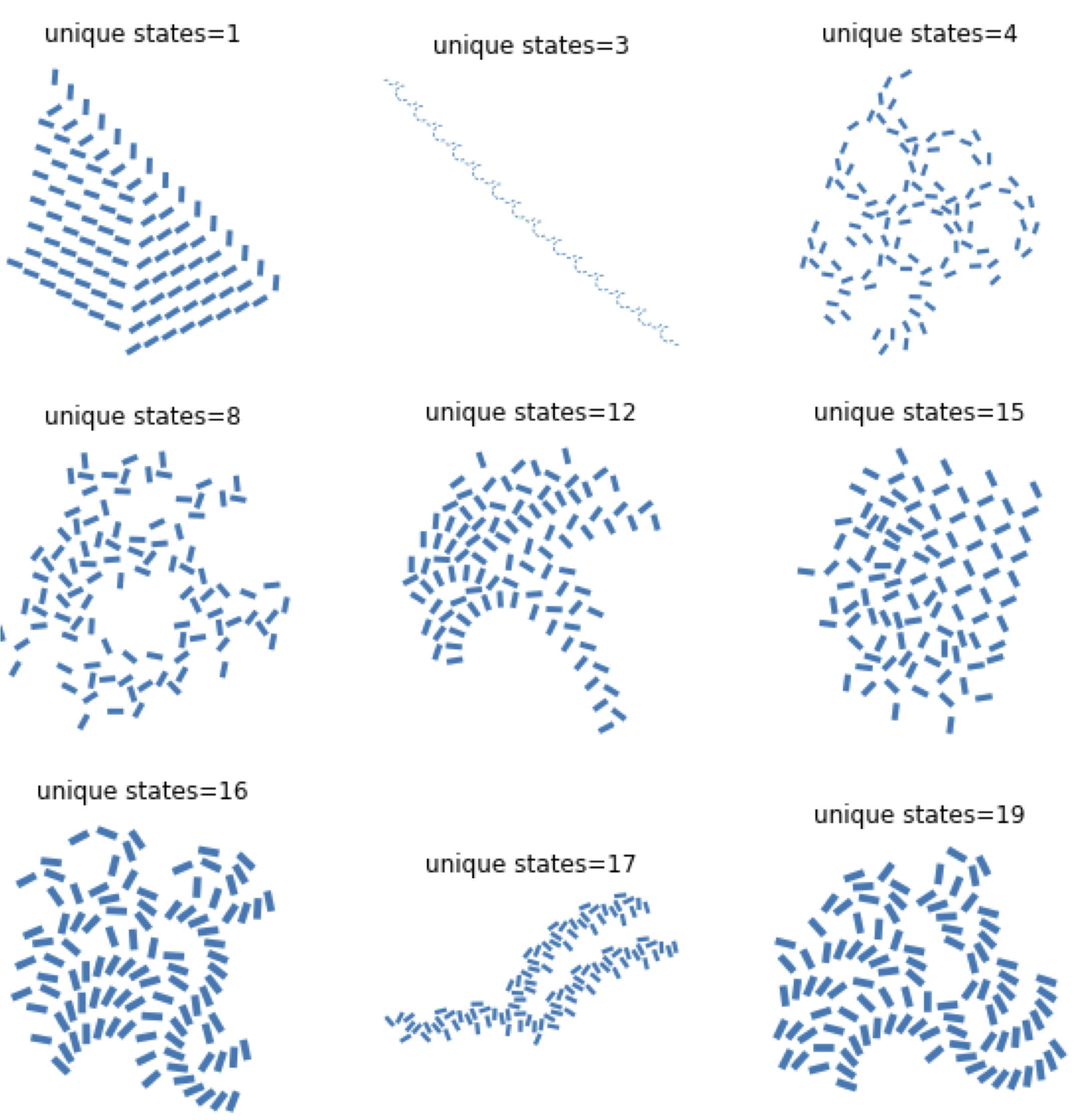 A Representation of Artificial Spin Ice for Evolutionary Search
A Representation of Artificial Spin Ice for Evolutionary Search
Arthur Penty and Gunnar Tufte
Proceedings of the Artificial Life Conference, July 2021
Open Access: https://direct.mit.edu/isal/proceedings/isal/99/102944
Abstract: Arrangements of nanomagnets known as artificial spin ices show great potential for use in unconventional computation. The majority of exploratory work done in this area considers just a small handful of well studied geometries (nanomagnetic arrangements), and uses them as if they were a black box. Here we detail a novel representation of artificial spin ice geometries, which lends itself to the tuning and evolutionary search of geometries. Using our representation we present geometries tuned to exhibit a desired computational or meta-material property. This is the first example of such a search performed on artificial spin ice. -
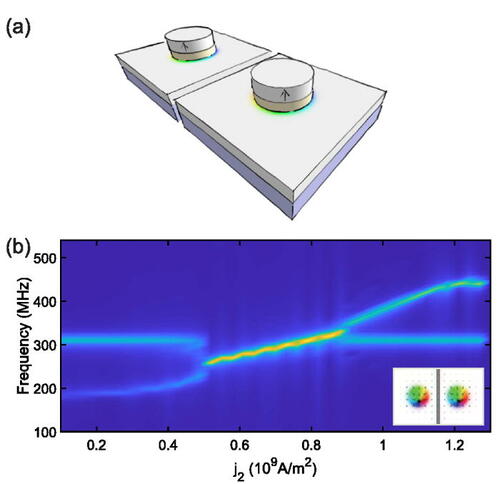 Synchronization of Chiral Vortex Nano-Oscillators
Synchronization of Chiral Vortex Nano-Oscillators
Zhiyang Zeng, Zhaochu Luo, Laura J. Heyderman, Joo-Von Kim, and Aleš Hrabec
Applied Physics Letters Vol. 118, No. 222405, June 2021
DOI: https://doi.org/10.1063/5.0048672 Open Access: https://www.dora.lib4ri.ch/psi/islandora/object/psi%3A38268
Abstract: The development of spintronic oscillators is driven by their potential applications in radio frequency telecommunication and neuromorphic computing. In this work, we propose a spintronic oscillator based on the chiral coupling in thin magnetic films with patterned anisotropy. With an in-plane magnetized disk imprinted on an out-of-plane magnetized slab, the oscillator takes a polar vortex-like magnetic structure in the disk stabilized by a strong Dzyaloshinskii–Moriya interaction. By means of micromagnetic simulations, we investigate its dynamic properties under applied spin current, and by placing an ensemble of oscillators in the near vicinity, we demonstrate their synchronization with different resonant frequencies. Finally, we show their potential application in neuromorphic computing using a network with six oscillators. -
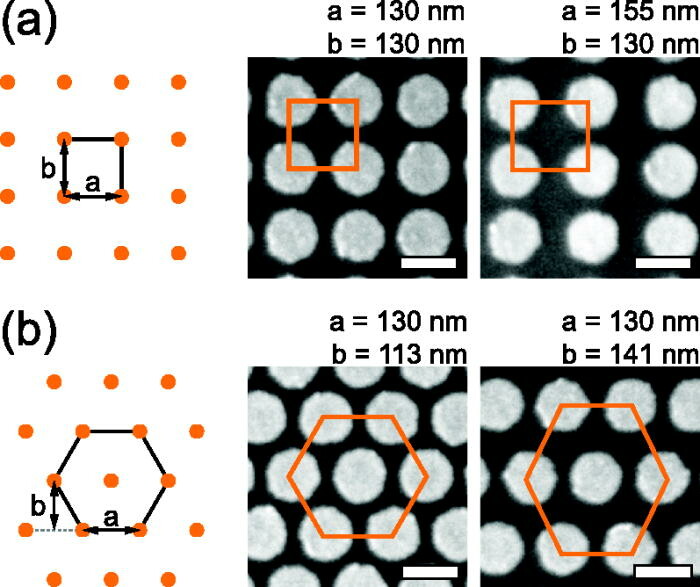 Anisotropy and Domain Formation in a Dipolar Magnetic Metamaterial
Anisotropy and Domain Formation in a Dipolar Magnetic Metamaterial
Einar Digernes, Anders Strømberg, Carlos A. F. Vaz, Armin Kleibert, Jostein K. Grepstad and Erik Folven
Applied Physics. Letters Vol. 118, No. 202404, May 2021
DOI: https://doi.org/10.1063/5.0045450
Open Access: https://hdl.handle.net/11250/2766932
Abstract: Long-range magnetic ordering can be stabilized in arrays of single-domain nanomagnets through dipolar interactions. In these metamaterials, the magnetic properties are determined by geometric parameters such as the nanomagnet shape and lattice symmetry. Here, we demonstrate engineering of the anisotropy in a dipolar magnetic metamaterial by tuning of the lattice parameters. Furthermore, we show how a modified Kittel's law explains the resulting domain configurations of the dipolar ferromagnetic arrays. -
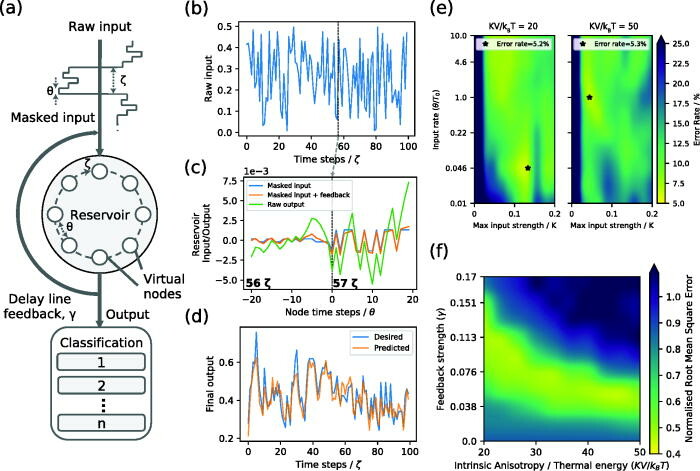 Voltage-controlled superparamagnetic ensembles for low-power reservoir computing
Voltage-controlled superparamagnetic ensembles for low-power reservoir computing
A. Welbourne, A. L. R. Levy, M. O. A. Ellis, H. Chen, M. J. Thompson, E. Vasilaki, D. A. Allwood, T. J. Hayward
Applied Physics Letters Vol. 118, No. 202402, May 2021
Open Access: https://doi.org/10.1063/5.0048911
Abstract: We propose thermally driven, voltage-controlled superparamagnetic ensembles as low-energy platforms for hardware-based reservoir computing. In the proposed devices, thermal noise is used to drive the ensembles' magnetization dynamics, while control of their net magnetization states is provided by strain-mediated voltage inputs. Using an ensemble of CoFeB nanodots as an example, we use analytical models and micromagnetic simulations to demonstrate how such a device can function as a reservoir and perform two benchmark machine learning tasks (spoken digit recognition and chaotic time series prediction) with competitive performance. Our results indicate robust performance on timescales from microseconds to milliseconds, potentially allowing such a reservoir to be tuned to perform a wide range of real-time tasks, from decision making in driverless cars (fast) to speech recognition (slow). The low energy consumption expected for such a device makes it an ideal candidate for use in edge computing applications that require low latency and power. -
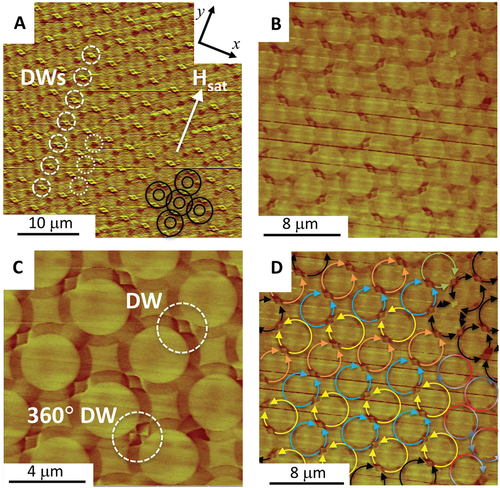 Dynamically Driven Emergence in a Nanomagnetic System
Dynamically Driven Emergence in a Nanomagnetic System
Richard W. Dawidek, Thomas J. Hayward, Ian T. Vidamour, Thomas J. Broomhall, Guru Venkat, Mohanad Al Mamoori, Aidan Mullen, Stephan J. Kyle, Paul W. Fry, Nina-Juliane Steinke, Joshaniel F. K. Cooper, Francesco Maccherozzi, Sarnjeet S. Dhesi, Lucia Aballe, Michael Foerster, Jordi Prat, Eleni Vasilaki, Matthew O. A. Ellis, and Dan A. Allwood
Advanced Functional Materials Vol. 31, No. 15, February 2021
https://doi.org/10.1002/adfm.202008389
Abstract: Emergent behaviors occur when simple interactions between a system's constituent elements produce properties that the individual elements do not exhibit in isolation. This article reports tunable emergent behaviors observed in domain wall (DW) populations of arrays of interconnected magnetic ring-shaped nanowires under an applied rotating magnetic field. DWs interact stochastically at ring junctions to create mechanisms of DW population loss and gain. These combine to give a dynamic, field-dependent equilibrium DW population that is a robust and emergent property of the array, despite highly varied local magnetic configurations. The magnetic ring arrays’ properties (e.g., non-linear behavior, “fading memory” to changes in field, fabrication repeatability, and scalability) suggest they are an interesting candidate system for realizing reservoir computing (RC), a form of neuromorphic computing, in hardware. By way of example, simulations of ring arrays performing RC approaches 100% success in classifying spoken digits for single speakers.
Presentations
-
Computation in magnetic metamaterials
RIEC International Workshop on Spintronics, Online
Johannes H. Jensen, April 6, 2023. -
Towards smart sensing with a spintronic reservoir computer
Magnetism, University of Manchester, Manchester, UK
G. Venkat, I. Vidamour, C. Swindells, T. J. Hayward, D. A. Allwood, April 3-4, 2023.
Presentation slides -
Importance of reservoir architectures in comparing physical reservoir systems
Workshop on Unconventional Computing, Erice, Italy
G. Venkat, I. Vidamour, C. Swindells, T. J. Hayward, D. A. Allwood, October 20-26, 2022.
Presentation slides -
Artificial Spin-Ice
Workshop on Unconventional Computing, Erice, Italy
Gunnar Tufte, October 20-26, 2022. -
Emergent properties of ferromagnetic ensembles
24 Hours of Science 2022 at IBM Research
Rolf Allenspach, September 21, 2022. -
Obtaining additional behaviour from magnetic ring arrays for reservoir computing
Magnetism, University of York, York, UK
G. Venkat, I. Vidamour, C. Swindells, T. J. Hayward, R. Allenspach, A. Bischof, D. A. Allwood, March 28-29, 2022.
Presentation slides -
Towards nanomagnetic devices
Seminar, University Duisburg-Essen, Germany
Rolf Allenspach, January 18, 2022. -
Nanomagnetic devices
Joint IoP/ITN MagnEFi Magnetism School, Leeds, UK
Rolf Allenspach, October 28, 2021. -
Sculpting the Spin Ice for Computation
Third International Workshop on Theoretical and Experimental Material Computing (TEMC), Helsinki, Finland
Arthur Penty, NTNU, October 18-22, 2021. -
Magnetic nanodevices
Young Researchers Workshop on Skyrmions, Annweiler am Trifels, Germarny
Rolf Allenspach, September 13, 2021. -
A Representation of Artificial Spin Ice for Evolutionary Search
ALIFE - Virtual
Arthur Penty, NTNU, July 19-23, 2021. -
Imaging the Emergent Behaviour in Nanoring Assemblies for Reservoir Computing Applications
INTERMAG
Guru Venkat, The University of Sheffield, April 26-30, 2021. -
From Stochasticity to Functionality: Harnessing Magnetic Domain Walls for Probabilistic and Neuromorphic Computing
International Conference on Magnetics (INTERMAG) - Virtual
Tom Hayward, The University of Sheffield, April 26-30, 2021. -
Bio-inspired Artificial Intelligence
NORA/NAIL Webinar
Gunnar Tufte, NTNU, April 23, 2021. -
Introducing Flatspin: Enabling Large Scale Dynamical Artificial Spin Ice SimulationsSculpting the Spin Ice for Computation
The 65th Annual Conference on Magnetism and Magnetic Materials (MMM) - Virtual
Anders Stromberg, NTNU, November 2-6, 2020. -
Domain Wall Dynamics in Junctions of Bi-ring Structures
The 65th Annual Conference on Magnetism and Magnetic Materials (MMM) - Virtual
Guru Venkat, The University of Sheffield, November 2-6, 2020.
Tools
RingSim
RingSim is an agent based phenomenological model which uses magnetic domain walls to simulate the microscopic and macroscopic response of magnetic ring arrays with thousands of elements when stimulated by magnetic fields. The simulator can also be used to test the reservoir computing properties of these arrays by predicting task agnostic reservoir computing metrics and the performance of ring arrays in simulating various tasks.
Partners
Norwegian University of Science and Technology

Erik Folven

Gunnar Tufte

Magnus Själander
The University of Sheffield

Dan Allwood

Tom Hayward
ETH-Zürich

Laura Heyderman
Ghent University

Bartel Van Waeyenberge
